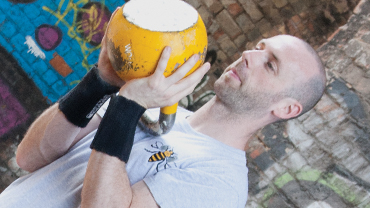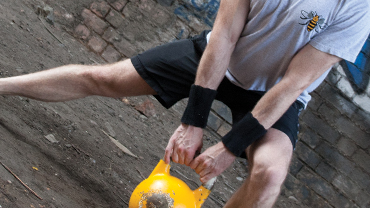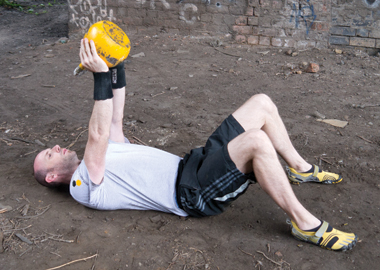Meat and Potatoes Workout
Beginners Level
Meat and Potatoes is a basic workout where you are only using a single kettlebell. The exercises within this workout are chosen for their simplicity, making this a great introduction to conditioning with kettlebells. Make sure you warm-up fully before proceeding with this workout.
INstruction
2 Rounds | 45 secs work and 15 secs rest
Single Arm Rows (each side)
One Hand Swings (each side)
1-2 min rest
You will be performing 2 rounds of this conditioning circuit. The 9 kettlebell exercises should be performed for 45 seconds each, with only 15 seconds rest in-between each exercise. Don’t waste time transitioning from one exercise to the next. Try to move quickly into your start position for the next exercise, and be ready to go.
On the single sided exercises, in this case the Single Arm Rows and the One Hand Swings, you will work on one side for 45 seconds, take the 15 seconds rest, then move onto the opposite side before proceeding to the next exercise. Your aim is to try to work to a high level and complete as many reps as possible within each 45 second block. The rest period between exercises is only a short amount of time so initially you may struggle, depending on what you current fitness level is like. If this is the case, don’t aim to max out on the reps and take the full 2 minute rest in between rounds.
Bodyparts Worked
As much as this workout is aimed at beginners it’s suitable for all fitness levels. If you wish to make it harder you can always use a selection of kettlebells, heavier on the exercises you are strong on, or alternatively you could remove the 15 secs rest between exercises and just work all the way through with out stopping. As always try to ensure that your technique holds together when you’re tired. Don’t jeopardise good movement to falsely think you will get a better workout by speeding up. Good technique is always first and foremost at all my workouts.





























